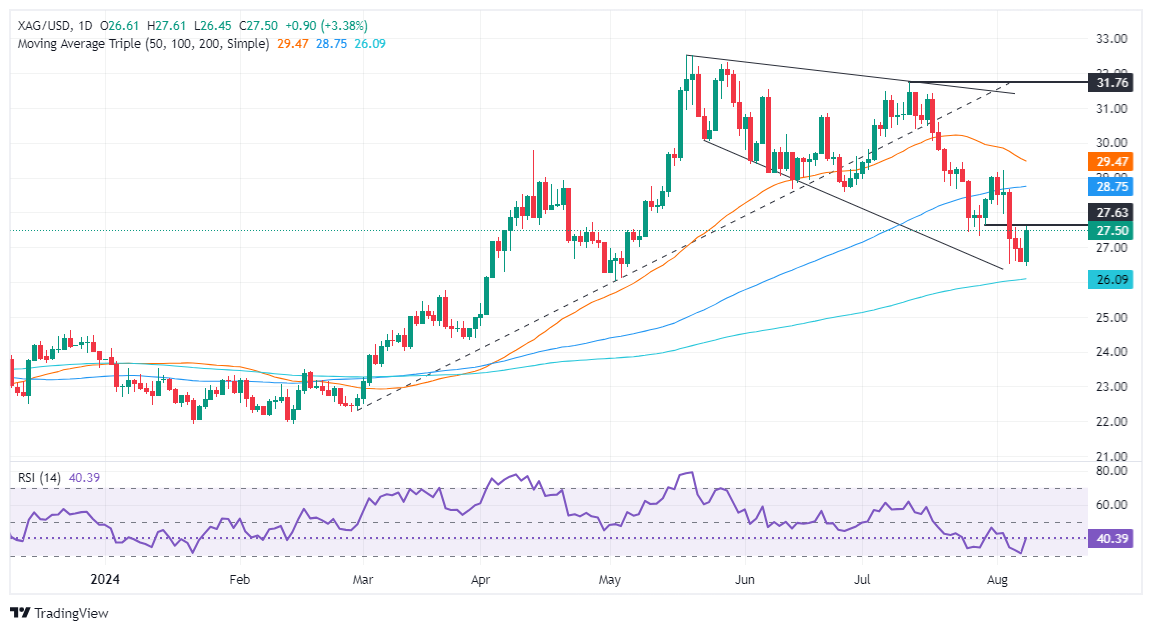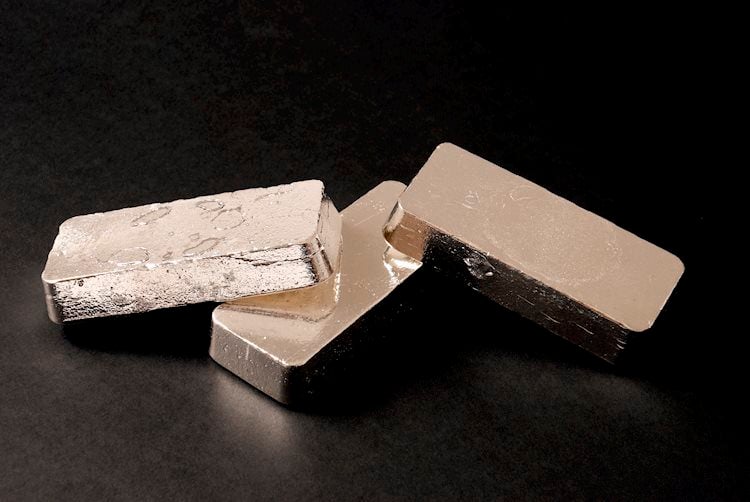- Silver is trading at $27.49, up over 3.50% after retesting the $27.00 mark.
- The path of least resistance remains bearish; below $27.00, the support levels of $26.45 and $26.11 are targeted.
- Above $27.56, resistance levels are at $28.00 and the August 5 high at $28.67.
Silver prices rose sharply on Thursday, gaining over 3.50% as traders reclaimed the $27.00 mark despite strong US data supporting the greenback. Despite this, XAG/USD recovered from its weekly low of $26.45 and hit a new weekly high before settling at the current spot price. Silver is trading at $27.49 at the start of the Asian session on Friday
XAG/USD Price Prediction: Technical Outlook
Silver prices rose above $27.00 but remained below the 100-day and 50-day moving averages (DMAs) of $28.76 and $29.79, suggesting that sellers are in control. The Relative Strength Index (RSI), which remains bearish, further confirms this.
The path of least resistance is therefore sloping downwards. If XAG/USD breaks below $27.00, the next support would be the weekly low of $26.45. In case of further losses, the 200-DMA at $26.11 turns out to be the next support, followed by the psychological level of $26.00.
Conversely, if XAG/USD buyers reclaim the $27.56 level, the next resistance would be at the $28.00 level, ahead of the August 5 high at $28.67.
XAG/USD Price Action – Daily Chart

Frequently asked questions about silver
Silver is a precious metal that is widely traded among investors. It has historically been used as a store of value and a medium of exchange. Although it is less popular than gold, traders can turn to silver to diversify their investment portfolio, for its intrinsic value or as a potential hedge in times of high inflation. Investors can buy physical silver in coins or bars, or trade it through instruments such as exchange-traded funds that track its price on international markets.
The price of silver can change based on a variety of factors. Geopolitical instability or fear of a severe recession can drive up the price of silver due to its safe-haven status, although to a lesser extent than gold. As a non-yielding investment, silver tends to rise when interest rates are lower. Its movements also depend on how the U.S. dollar (USD) behaves, as the asset is valued in dollars (XAG/USD). A strong dollar tends to keep the price of silver in check, while a weaker dollar is likely to drive prices higher. Other factors such as investment demand, mining supply—silver is much more common than gold—and recycling rates can also affect prices.
Silver is widely used in industry, especially in areas such as electronics or solar energy, because it has one of the highest electrical conductivities of any metal – higher than copper and gold. A surge in demand can raise prices, while a decline tends to lower them. The dynamics of the US, Chinese and Indian economies can also contribute to price fluctuations: in the US and especially in China, silver is used in various processes in major industries; in India, consumer demand for the precious metal for jewelry also plays an important role in pricing.
Silver prices tend to follow the movements of gold prices. When gold prices rise, silver usually follows the trend as they share a similar status as safe haven assets. The gold/silver ratio, which indicates the number of ounces of silver required to equal the value of one ounce of gold, can help determine the relative value of both metals. Some investors consider a high ratio to be an indicator that silver is undervalued or gold is overvalued. On the contrary, a low ratio could indicate that gold is undervalued compared to silver.

